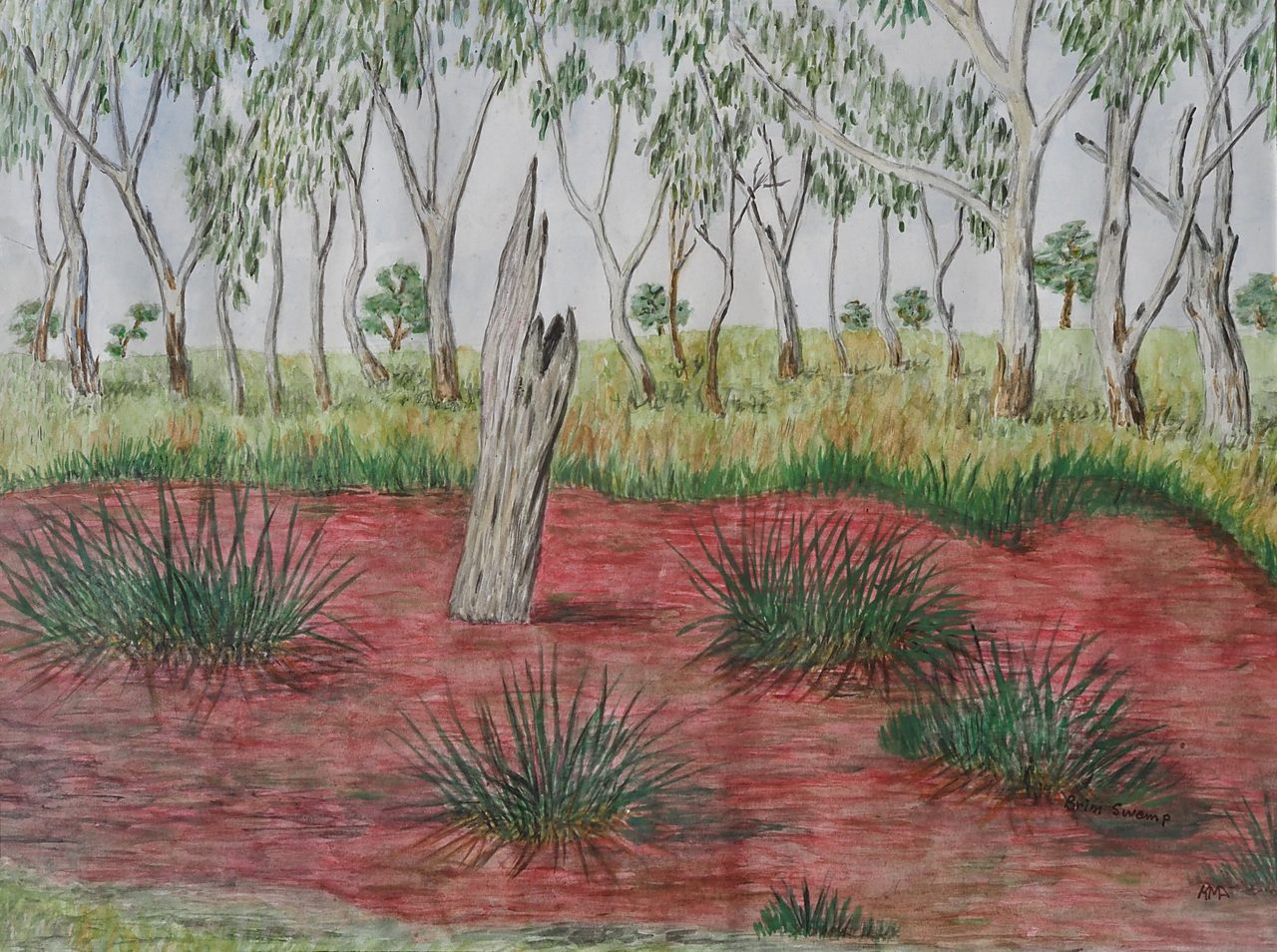The Botanical Art of Kath Alcock
Brief History.
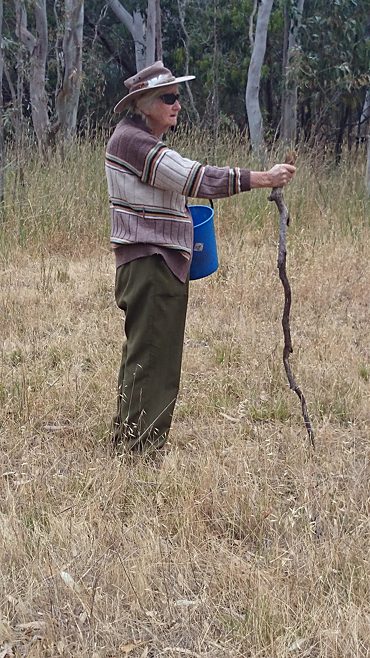
Kath grew up in the Wolseley area and then following her marriage, moved to Comaum. It was during difficult times in her marriage that Kath took up painting in 1956. Many of her early paintings are from the Comaum and Wolseley districts. When Kath moved to Naracoorte to live alone, she became a member of the Naracoorte Field Naturalist Club, as well as going on several holiday trips. Two of the main holiday trip providers were the Happy Wanderers, led by Jean Grundy and Explore Ranges, led by Robyn and Graham Guy. These trips helped provide different plant material for Kath to paint, from around the States. Kath also built up a network of friends, who gathered plant material from all over Australia. Their names are recorded on the back of the paintings.
My Involvement.
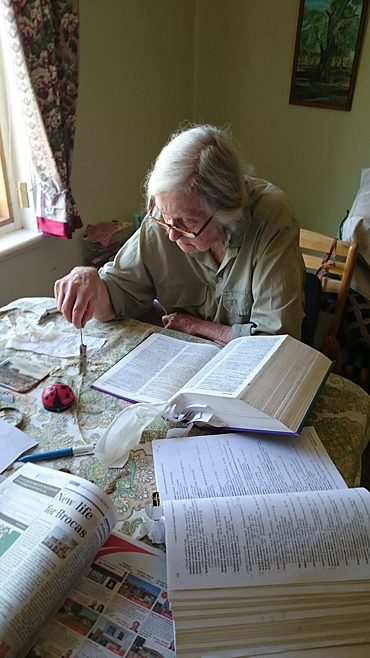
During 1985, while on a combined Field Naturalist campout from Victor Harbor to the Coorong, I met Kath. I learnt then, of her extensive local knowledge of the South-East flora. Following this trip, I contacted Kath to see if I could accompany her to locate some of the plants that I was interested in finding near Naracoorte. My long friendship with Kath began in the early Nineties. I spent many trips staying with her and going on field trips in the South-East. Due to our love of field trips with plant collecting, our time together prompted Kath to give me her botanical paintings. This was when she could no longer see clearly to paint, and her declining health meant that she could no longer live alone. Kath bequeathed her Fungi paintings to the Herbarium of Victoria, and so I delivered them as requested.
About the paintings.
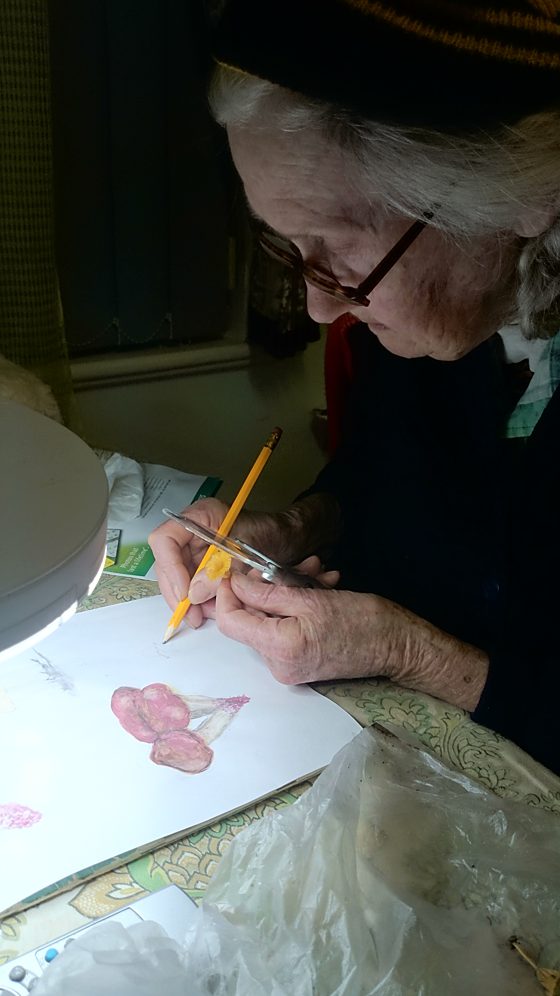
Kath always maintained that she was a “visual” artist and not a “botanical” artist. Her paintings portray how she sees the plant and not what botanical details are required for identification. They are set out in books, mostly arranged in Family groups. There are over 100 pages in most books. The paper used is mainly A4 size, with up to 20 individual paintings per page. Most of her paintings were done at home, from specimens collected in the field and kept live in water at home. Kath would first sketch the outline, then add the watercolour. When away on long field or holiday trips, she would press the plants each day and give them a number for that trip, to keep track of where they were collected. Then when back home with a quiet time, which could be the following year or more, Kath would go through the pressings and paint each one. She would then try to identify all her specimens. If she could not work out their name, she would use her “peg on a string” to divine the final answer. Occasionally she would send specimens to the State Herbarium to find out what they were, or if she thought they were a different species from that described in the Flora of SA. In the later years of her life, her eyesight became blurred, to finally become Macular degeneration. This can be seen in her more recent paintings, until 2015.
The data set.
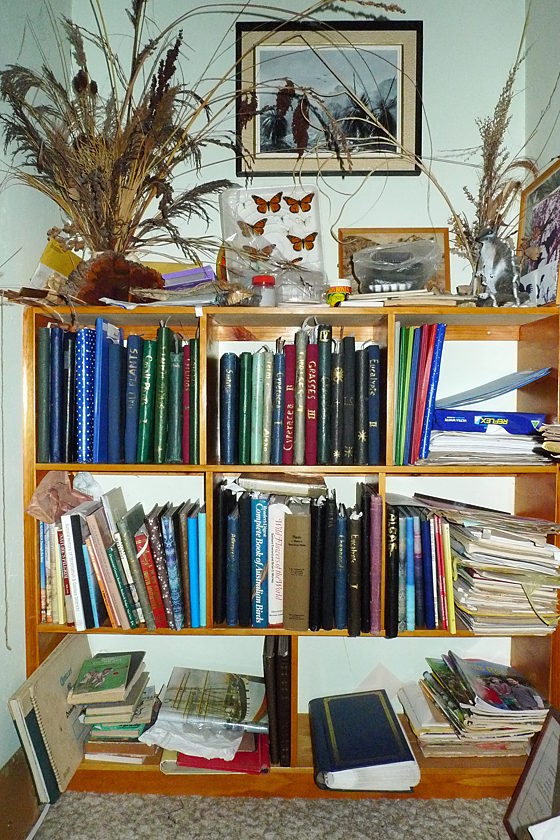
I have checked each book and for each page/sheet worked out how many individual species are depicted and then compiled what information Kath had written on the back of each painting. Where possible, I also tried to ensure that the name is current, by checking through several different websites. Many of the locations I have recorded as ‘Garden specimen’, as Kath loved to collect plants, then grow them on, either outside or in pots. They were then painted often long after being collected and may even have changed, from the extra water given. After completion of recording the raw data, I then added extra location data, checked date data, and finally added some collection data. I am responsible for all decisions and any errors made during the compilation of this database.
Results.

Kath painted over 15,000 different images of botanical species, including: - marine and freshwater Algae, Lichen, Moss, Fungi, Ferns, and flowering plants. The database I have compiled is from 40 books with 5027 pages which created 13,531 records. I located 1400 Herbarium collections associated with a painting. About 7000 paintings are from the South-East of South Australia and Western Victoria.
Acknowledgements.
Most of this would not have been possible without access to the following websites during 2019 to March 2020. I wish to thank everyone involved with these sites.
The Australian Virtual Herbarium, Council of Heads of Australasian Herbaria.
Flora of Victoria, Royal Botanic Gardens Victoria.
Electronic Flora of South Australia.
FloraBase – the Western Australian Flora.
PlantNet, Royal Botanic Gardens and Domain Trust, Sydney.
Seeds of South Australia, Botanic Gardens of South Australia.
Plants of South Australia.
I also wish to thank Bob Baldock, an Hon. Research Associate of the State Herbarium, SA, November 2020 who suggested names for Kath’s Algae book paintings, the identifications are speculative, anatomical investigation is needed for accuracy. Please note that he has not checked any of the other algae in other books, the names are left as Kath provided.
A special thank you to Rex Croft for all his work in compiling all this data and images to make a great website to display Kath’s lifelong work.
Denzel Murfet, 8 November 2020
